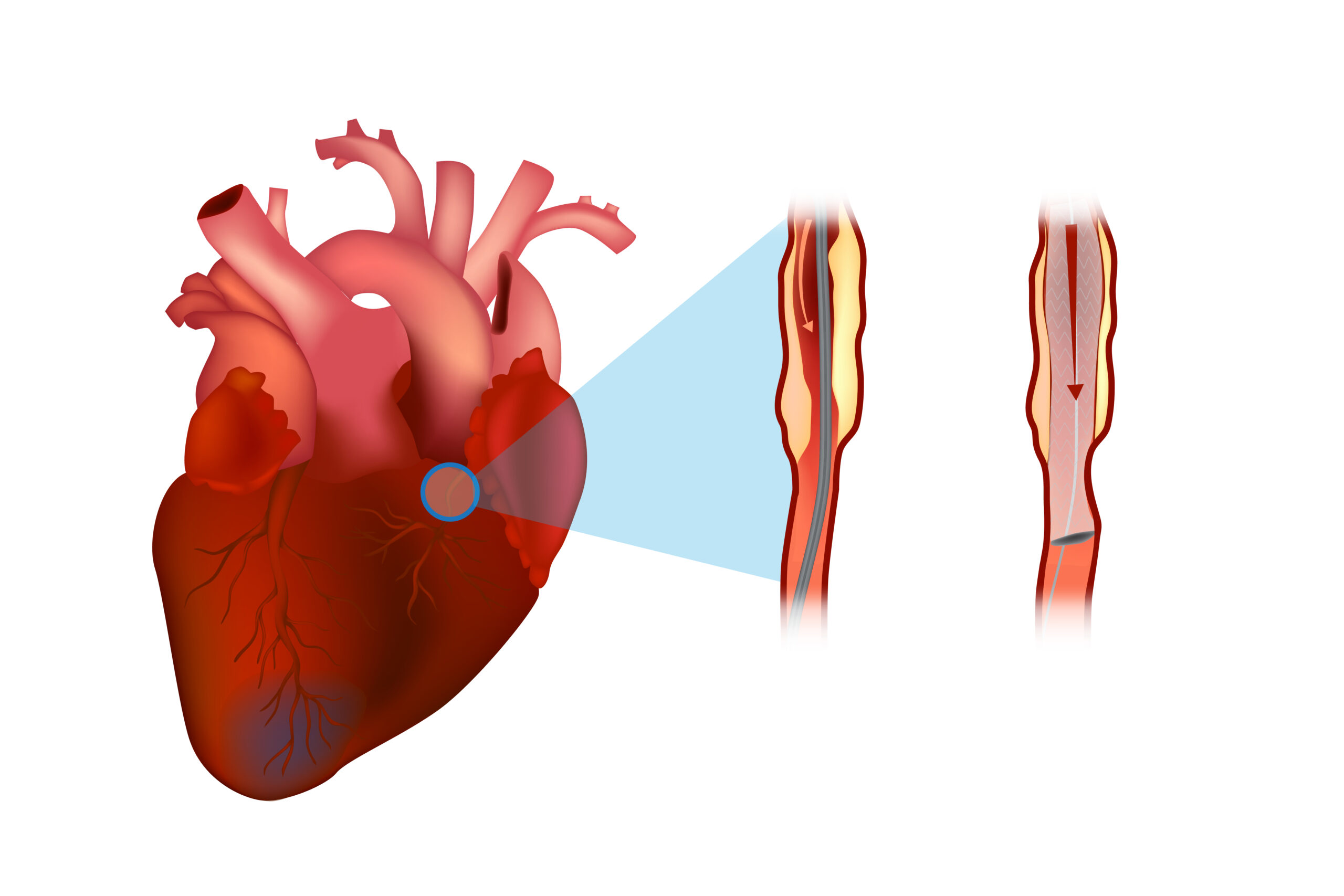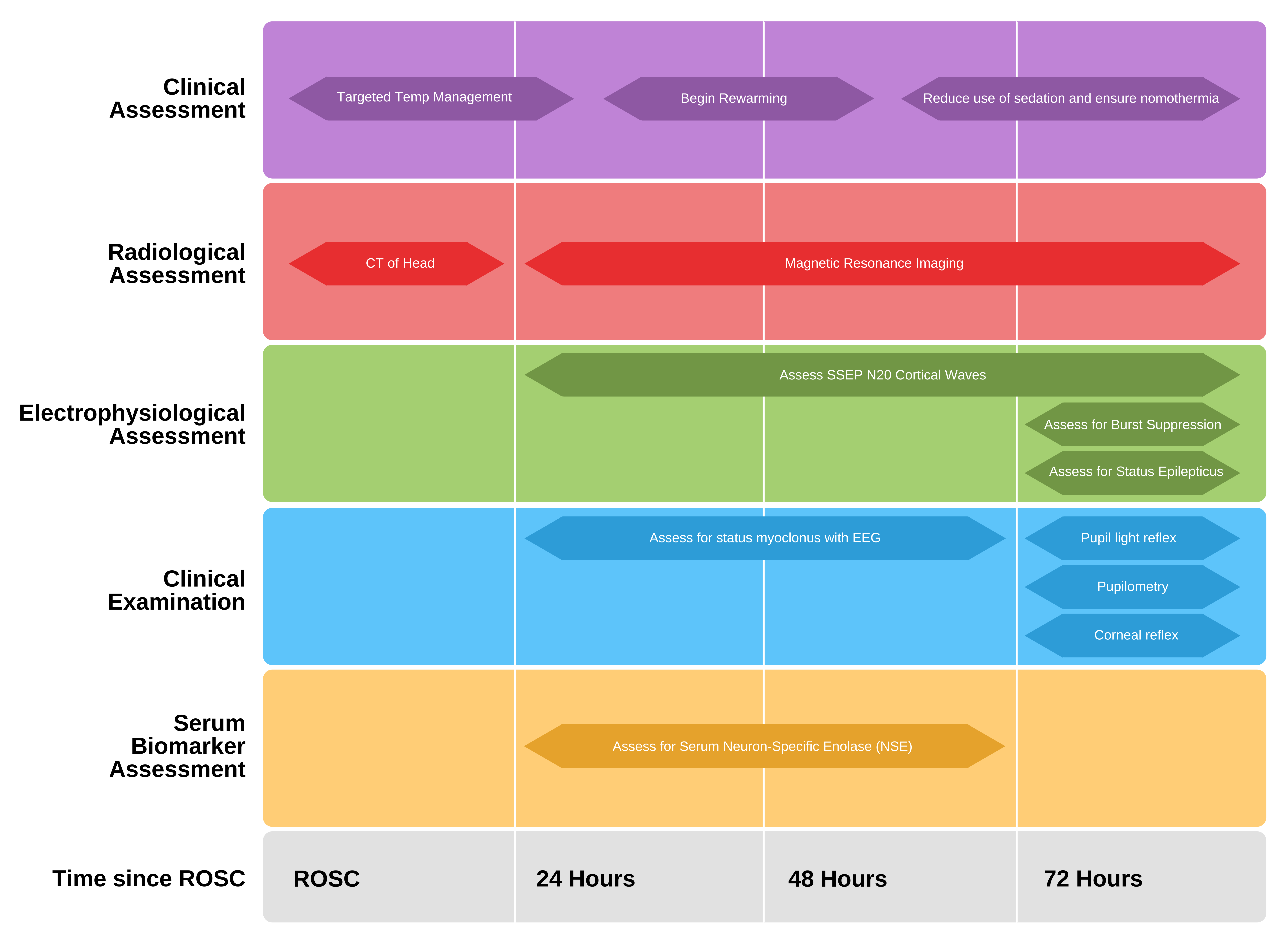Care Following Cardiac Arrest
Care Following Cardiac Arrest
A well-rounded, organized, and team-based care system is necessary for providing care following cardiac arrest. This will allow standardization of care, ensuring the patients have access to appropriate focused temperature management, circulatory and respiratory care, early percutaneous coronary interventions (PCIs), blood glucose optimization, neurological rehabilitation, and other vital management.
Focused (targeted) temperature management
Targeted temperature management (TTM) refers to medically inducing hypothermia or enacting and maintaining focused temperature goals.
The AHA Guidelines recommend medical hypothermia ranging from 32–36oC (or 89.6–95.2oF) for a minimum of 24 hours following return of spontaneous circulation (ROSC) in all comatose patients. Medical hypothermia may also be provided to comatose patients following OHCA with a rhythm of either asystole or pulseless electrical activity (PEA) or any IHCA.
Circulatory and respiratory care
Following ROSC, oxygen supplementation should be targeted to achieve oxygen saturations between 92% and 98%. Sustained oxygen saturation > 99% can result in toxic effects of oxygen.
Overventilation should be avoided as this can lead to excessive intrathoracic pressure and decreased blood flow to the brain from reduced PaCO2. The ventilation rate should be between 10 and 12 breaths per minute with a goal of ETCO2 between 35 and 40 mm Hg or PaCO2 between 35 and 45 mm Hg. Of course, this can be adjusted to meet specific patients’ needs.
Finally, fluid and ionotropic medications must be adjusted to achieve targeted blood pressure parameters and systemic circulatory needs. Most experts agree that mean arterial pressures (MAPs) should be at least 65 mm Hg or above.
Related Video: One Quick Question: How Do You Calculate Mean Arterial Blood Pressure?
Early percutaneous coronary intervention (PCI)
All OHCA patients with evidence of ST-segment elevation myocardial infarction (STEMI) on electrocardiogram should receive early coronary angiography. Emergency coronary angiography can be provided to select OHCA patients who are comatose without STEMI. Additionally, all other candidates for coronary angiography should be considered for this evaluation in consultation with interventional cardiology.

Percutaneous coronary intervention (PCI) is a narrowed coronary artery intervention.
Blood glucose optimization
There is no universal recommendation for target blood glucose levels following ROSC. However, it is reasonable to set a goal for maintaining moderate blood glucose levels of 150–180 mg/dL.
Neurological rehabilitation
Following ROSC, the goal is that patients return to their prearrest level of functioning. To that end, determining the neurologic prognosis early in care is very useful. Of course, patients who undergo medical hypothermia should have this prognostication delayed for about 72 hours after body temperature normalizes. For others, prognostication should occur about 72 hours (or longer if exposed to significant sedation or other effects) after ROSC.
